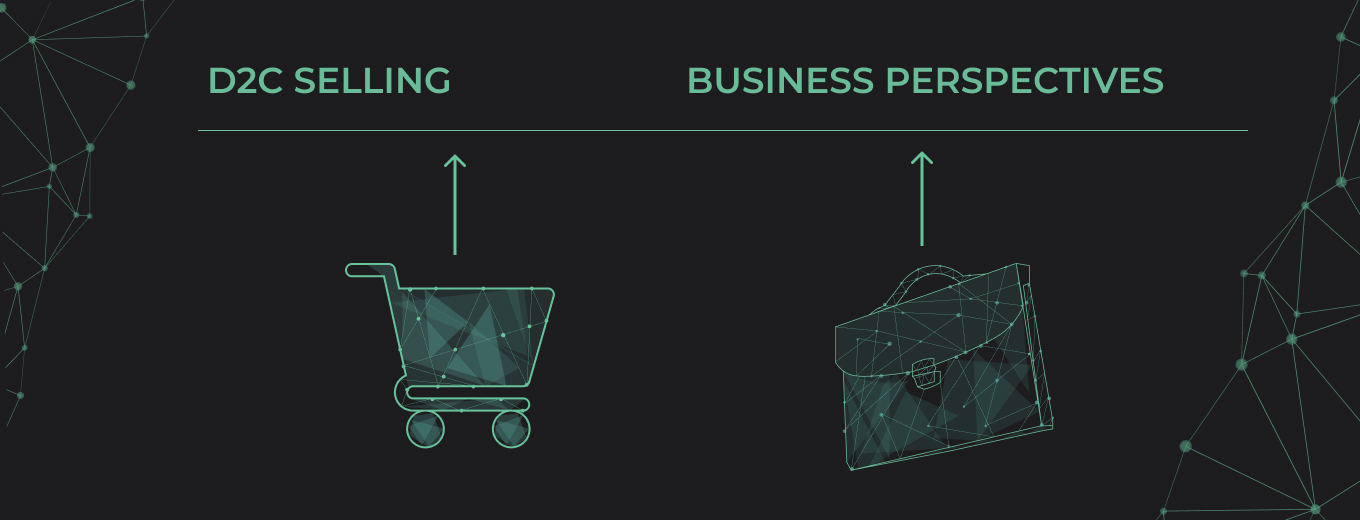
Svitlana Rakova
СОО



Traditionally, it was thought that the brand was only responsible for creating and producing the product, and further applying various marketing strategies. At the same time, logistics, sales, and distribution were handled by intermediaries such as wholesale partners or retailers. However, in recent years, businesses have begun to realize the importance of direct communication with the customer and apply the D2C model to their activities. Today, this model is actively developing and allows companies to establish close contact with the customer, thereby improving their services. The d2c channel allows you to strengthen your brand in the market and actively grow, improving your reputation and sales. But how do companies switch to direct interaction with the customer without increasing costs or sacrificing quality? Read more in this article.
All global developments are reflected in our lives in one way or another. Thus, the accelerated development of online commerce and the global lockdown has influenced the more active development of D2C. Speaking more about d2c channel meaning, it stands for Direct-to-Consumer. It means that a brand creates, manufactures, promotes, and delivers its products without third parties. This commerce model positively impacts contact with the target audience and saves a lot of money, provides a good reputation, and creates a unique user experience. By removing intermediaries in delivering the product to the customer, you noticeably get closer to your target audience & establishing a unique customer-centric approach. The brand can improve its products and sales funnel based on feedback. The online buying process becomes much easier when the company controls every step, from outreach to engagement.
But is it worth trying? Starting in 2020, D2C’s effectiveness has only grown, with a 16.9% increase in the 2022 marketplace performance over the previous year. eMarketer predicts the rapid channel growth will continue through 2023, resulting in $174.98 billion in revenue.

Despite such telling success in this niche, the percentage of companies switching to the D2C channel is still small. The fact is that the transition to Direct-to-Consumer sales requires an entirely different level of preparation. Companies must actively use digital tools to automate processes, manage large amounts of data, and reconvert standard tasks to the digital space. So, what is d2c channel operating principle? Below, we highlight a few steps to make your transition to D2C sales easier and more successful.
A virtual storefront’s goal is to bring real value to customers and helps them make informed choices. The Internet should not become a hindrance when choosing even the most serious product, such as appliances, and the virtual storefront should not be inferior in some way to the real one. To achieve this, the brand must use quality content. What you need to do for this purpose is the following:
Your storefront visuals aren’t just about quality photos and sensual text. Much depends on the type of product you have and its format. Your products must be presented to make them easier to buy. For example, you need to emphasize the product’s material if it is an accessory. For larger products, such as kitchen appliances, you should specify the exact dimensions and take pictures of all sides. This will give customers an understanding of how this or that thing will fit into their interior.
All your content should be properly organized, making your work easier and minimizing errors. You should eliminate duplicates, create backups, and assign the right name to files. You can use special programs to automate these processes.
PIM and DAM catalogs can help you get product specifications right. These automated digital tools reduce the likelihood of errors and the time you have to work with product data. In addition, these systems also allow you to personalize item data and set up analytics to identify and correct errors in time.
When you’ve figured out how to place your goods in a virtual storefront conveniently, the second thing you need to consider is how your customer will receive the goods. The customer needs to get their goods in one piece comfortably, but the company may have problems controlling and managing the logistics processes. Today, many logistics services offer different cooperation terms, making your choice more difficult. To make it easy for you to manage logistics flows with minimal effort, you need to do it centrally while not allocating additional costs. You can solve this difficult task by doing this in a single digital system.
Suppose the brand has worked in offline retail before. Then order picking can be a challenge for it. Now the brand has to bundle customer orders itself. However, thanks to advanced technology, companies can use tools to automate these processes too, and all you have to do is watch.
The delivery person is the actual representative of your brand. The customer will be happier if you provide them not only with quality goods and with delivery as well. To keep the quality of delivery at a high level, you have to provide your customer with a single digital solution containing information about the order. The ability to mark the order, contact the seller, evaluate the service, and leave feedback. This way, you build a successful reputation.
Customer feedback is one of the most important factors that allow you to grow and succeed in your business. You need to know what customers think of your service by collecting feedback, analyzing it, and identifying points that need improvement. A brand must communicate directly with its target audience because that’s the only way to know what they want.

With the help of the D2C model, companies can do their business, run campaigns and develop strategies without depending on anybody. However, the list of benefits does not end there.
The D2C channel is becoming an advanced e-commerce method that offers a huge number of benefits to both sellers and customers. Running your business based on automated digital processes becomes much easier because you have control over all the processes and monitor your brand’s reputation. As a result, your business will become stronger in the Marketplace and more relevant to consumers.
Comments